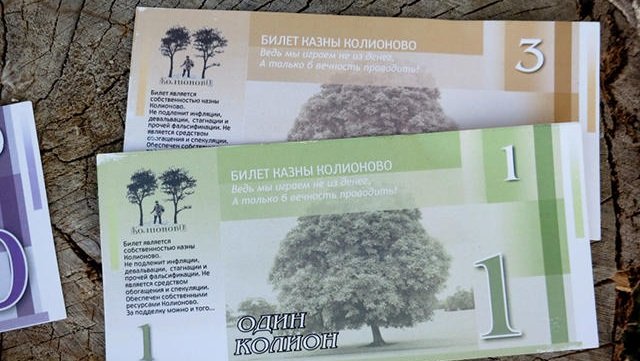The Russian ruble is shaking like on a roller coaster: after a crushing fall in value relativeof other world currencies in 2014, he then bounced upward already in this, showing strong growth against the dollar, euro, British pound and Japanese yen.
Even the giant Apple took a break fromonline sales in Russia due to «extreme» exchange rate fluctuations of the ruble in December, when the ruble fell by 19% in one day due to sales by nervous investors in Moscow.
The current stabilization of the ruble against the dollar is atabout 50 depleted not only the country's foreign exchange reserves, but also the reserves of confidence of Russian consumers and entrepreneurs: inflation remains at over 16%, and unemployment — at 5.6%.
Russian middle class and workers — Thisit is those who are paying the bills for the economic downturn. An average 10% drop in real income over the past year and a surge in mortgage defaults, as well as rising food and utility prices, are leaving many people struggling to make ends meet.
In the midst of this destabilization, Mikhail Shlyapnikov, a farmer from the remote Russian village of Kolionovo, believes that the salvation for the rural population from lack of money lies in «kollions».

What are colions?
Colions — It is an alternative currency for Russian farmers to use instead of cash to facilitate rural transactions.
Shlyapnikov says the idea came to him veryeasy. Frequent barter deals with friends allowed him to realize that goods such as geese or potatoes could become a more convenient form of settlement for transactions than the ruble.
Fundamentally an alternative could fall intocategory of banknotes, since their value is secured by relevant goods, such as potatoes or livestock, which can be exchanged in barter form in the future to complete the transaction.
The colonies are printed on photographic paper and come in denominations of 1, 3, 5, 10, 25 and 50. They even have a statement confirming their status as a medium of exchange (if not legally binding).
How much are the colions?
At the moment, the cost of the colions is as follows:
- 2 colions = 10 eggs
- 5 colions = bucket of potatoes
- 60 colions = 1 goose
- etc.
Pricing is independent, and applicability affects all aspects of rural life.
According to Shlyapnikov, in a village where residentsmay receive cash only a few times a year — during sowing and harvesting — colonies can make it easier to exchange everyday goods. For example, workers can plow a plot of land for a few coins and then exchange them for vegetables, fruits or fish.

The reaction of the Russian authorities
Since the main task of colonies isEstablishing a self-sufficient community with its own system of cashless transactions, the farmer’s idea attracted negative attention from the «vertical of power». The district attorney has already opened a criminal case against Shlyapnikov and the Colions for allegedly posing a threat to national financial stability and central bank policy. During the first hearing, which took place in early June, the prosecutor pointed out the problems that could arise with these kinds of local trust-based currencies, arguing that they are economically insignificant in their decentralized nature. The absence of any tax system and the possibility of default provide, in his opinion, enough grounds to consider the case of terminating operations with colonies.
He presented a completely different point of view to the courtfirst witness summoned for interrogation. Yuri Titov, a mechanic who lives in Moscow but has a home in Yegoryevsk, used colions in his daily operations. Yuri said that he once lent diesel fuel to Shlyapnikov and received 50 colonies. He argued that this was not a deal between two entrepreneurs, but a private exchange between two individuals, and therefore no one should care what they exchanged.
However, on July 1, the Egorievsky District Court decided that he still had a concern.
Decentralized currency: a new concept?
Actually, local decentralized currencies— this is not something new. Local currencies predate modern monetary systems. Their revival in developed and developing countries — it is an attempt by communities to take control of larger economic shocks that are themselves beyond their control.
Today there are more than 4000 privatecurrencies in more than 35 countries. These include commercial exchange sites that use barter loans as exchange units, private gold and silver exchangers, local paper money and computerized debit and credit systems.
Between 1837 and 1866 America witnessedthe era of free banking, in which virtually anyone could issue paper money. Then the states, territories and institutions located in them put into circulation their own currencies. Those times are well known to collectors and numismatists as the period of “wild banking.” Even today, there are several local, decentralized currencies:
- Berkshares — in the Berkshire area, Massachusetts, 2006
- Lifedollars — in Bellingham, Washington, 2004
- Cascadia — in Portland, 1993
Even in Russia, Shlyapnikov is far from the first to put into circulation an alternative currency. In the early 1990s, hundreds of Russian residents printed their currencies due to inflation and lack of money.
Vouchers of the infamous MMM pyramid,founded in 1989 by Sergei Mavrodi, his brother Vyacheslav Mavrodi and Olga Melnikova, could also be used as money. Ural francs were in circulation far beyond the borders of the region in which they were issued, in the Ural Republic that never saw the light of day. Not all of these cases came to court, however, from time to time this still happened.

The future of local currencies?
The concept embodied in Bitcoin and othersaltcoins became possible thanks to blockchain technology, which offers such security mechanisms as the basic rule of consensus and multi-signature, as well as much more, which helps prevent the establishment of a central destructive power over it.
It is unlikely that local currencies can offer somethingbetter than digital ones, which provide far more benefits, while encouraging participants to stay in the system to maintain liquidity and convertibility into fiat currencies.
In the case of Shlyapnikov and the use of colonies,however, most witnesses were pleased with the opportunity to use the cashless payment platform with those they trust for products they understand.
The trial on July 1 makes it clear thatthe Russian government does not accept this point of view and will continue to fight for every penny with which taxes to the treasury were not paid. So what is the Russian monetary system really worth if a government agency sees printed paper on a color printer as a terrible threat to it? It seems that few people care, as well as how absurd this whole situation looks from the side.
Based on CoinTelegraph




